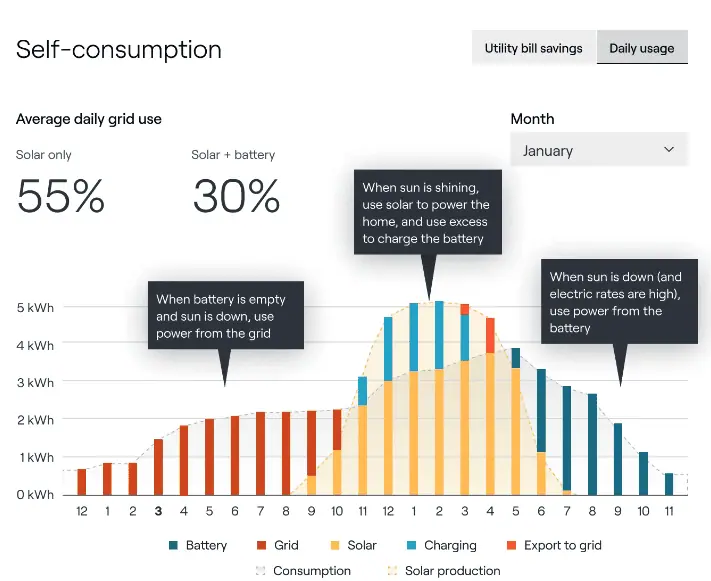Aurora recently launched our 2024 Solar Industry Snapshot. It brings together three distinct data sources — Aurora proprietary project data, installer research, and homeowner research — to provide, well, a snapshot of where the residential solar industry is now. More than that, it gives us a look at things to watch in the future.
In this blog, we’ll look at one of the most potentially game changing findings: The rise of battery storage for self consumption.

First, a little background. Perhaps you’ve heard of California’s Net Billing Tariff, aka NEM 3.0? Yes? Well, we don’t need to rehash everything here (but, for some background, we do here), so let’s just say: When NEM 3.0 was announced, there was a rush to get grandfathered in NEM 2.0, then a slowdown in installations when NEM 3.0 took effect.
But, as is often the case, policies intended to slow solar down that just so happen to affect solar negatively may work to slow down installs in the short term, but in the long term solar is undeniable. Solar installers are innovative, and they’re already innovating.
One potentially game changing innovation is battery storage for self consumption.
Traditionally, when we thought of batteries, it was for backup power, like a generator — a better, less polluting, more efficient generator.
But, with time-of-use rate structures that penalize those with solar panels for exporting power during the day, then penalize people again for using energy from the grid during peak evening times, a novel use case for batteries is developing: storing solar energy in a battery during the day, and using it at peak times can drive real ROI.
We’re already beginning to see the impact of this trend. Let’s look at another set of numbers, this time, it’s data from EnergySage:
- In California there’s been a nearly 45% increase in storage attachment since NEM 3.0 went into effect in April 2023
- 80% of EnergySage shoppers in California are now requesting storage quotes
Of course, it’s not just California. States across the country are adopting similar policies. Our Snapshot data backs this up: More than 80% of solar professionals all over the US said they saw increased homeowner interest in energy storage plus solar.
Perhaps our favorite graphic from the entire Snapshot shows how it works:

I mean, check out that grid usage. With solar alone it’s 55%, with solar and battery it’s down to 30%. And it avoids grid usage during the most expensive part of the day, as well. That’s measurable ROI — money in the homeowner’s pocket — and a real selling point.
It’s just another example of why we’re so optimistic about solar’s future. Every time there’s an obstacle thrown at the industry, solar companies come up with innovative solutions. NEM 3.0? High interest rates? Supply chain issues? Eventually solar providers overcome the issues and keep that line moving up and to the right.
In the coming weeks, we’ll look at more industry trends unearthed by the Solar Snapshot, and what solar providers are doing about them.
In the meantime, check out the entire Snapshot to get all the hard data, analysis, and visualizations on the solar market.


